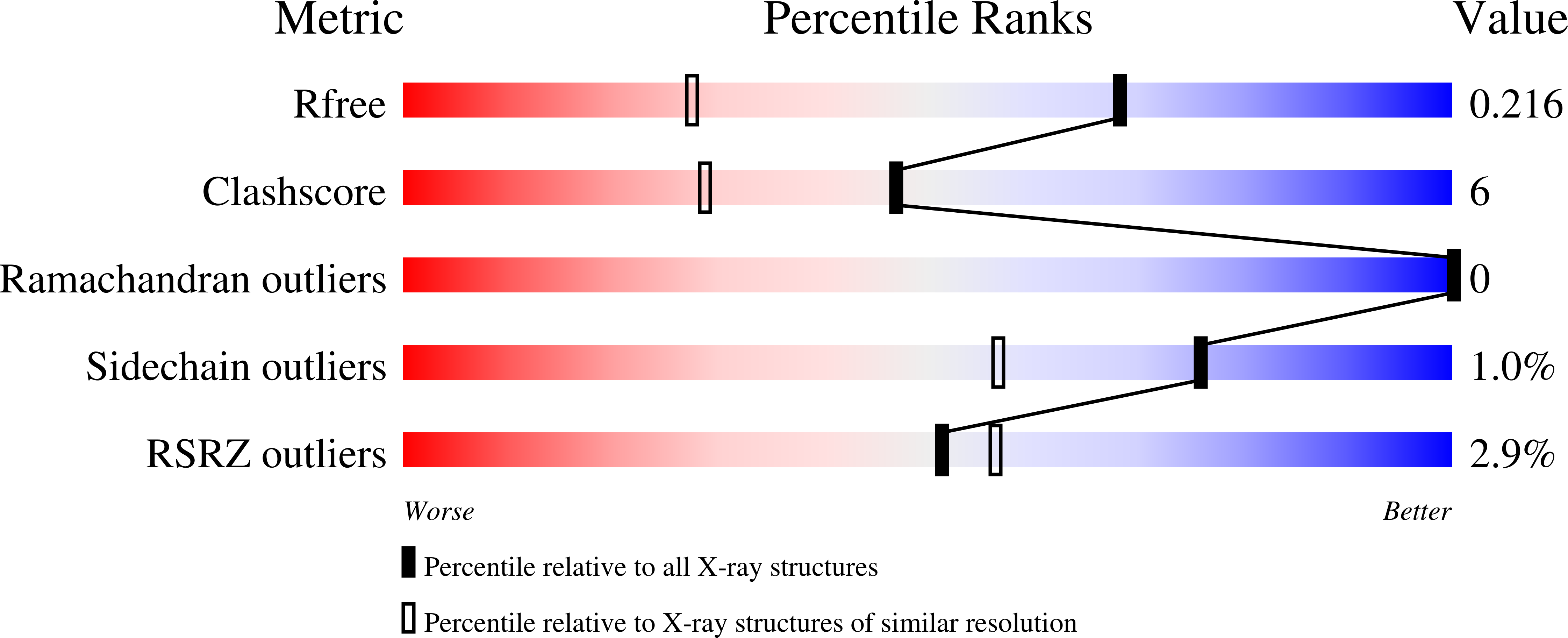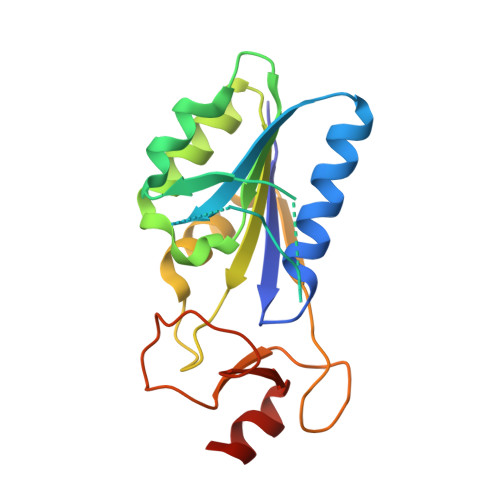Quaternary structure change as a mechanism for the regulation of thymidine kinase 1-like enzymes.
Segura-Pena, D., Lichter, J., Trani, M., Konrad, M., Lavie, A., Lutz, S.(2007) Structure 15: 1555-1566
- PubMed: 18073106
- DOI: https://doi.org/10.1016/j.str.2007.09.025
- Primary Citation of Related Structures:
2QPO, 2QQ0, 2QQE - PubMed Abstract:
The human cytosolic thymidine kinase (TK) and structurally related TKs in prokaryotes play a crucial role in the synthesis and regulation of the cellular thymidine triphosphate pool. We report the crystal structures of the TK homotetramer from Thermotoga maritima in four different states: its apo-form, a binary complex with thymidine, as well as the ternary structures with the two substrates (thymidine/AppNHp) and the reaction products (TMP/ADP). In combination with fluorescence spectroscopy and mutagenesis experiments, our results demonstrate that ATP binding is linked to a substantial reorganization of the enzyme quaternary structure, leading to a transition from a closed, inactive conformation to an open, catalytic state. We hypothesize that these structural changes are relevant to enzyme function in situ as part of the catalytic cycle and serve an important role in regulating enzyme activity by amplifying the effects of feedback inhibitor binding.
Organizational Affiliation:
Department of Biochemistry and Molecular Genetics, University of Illinois at Chicago, 900 South Ashland Avenue, Chicago, IL 60607, USA.




















